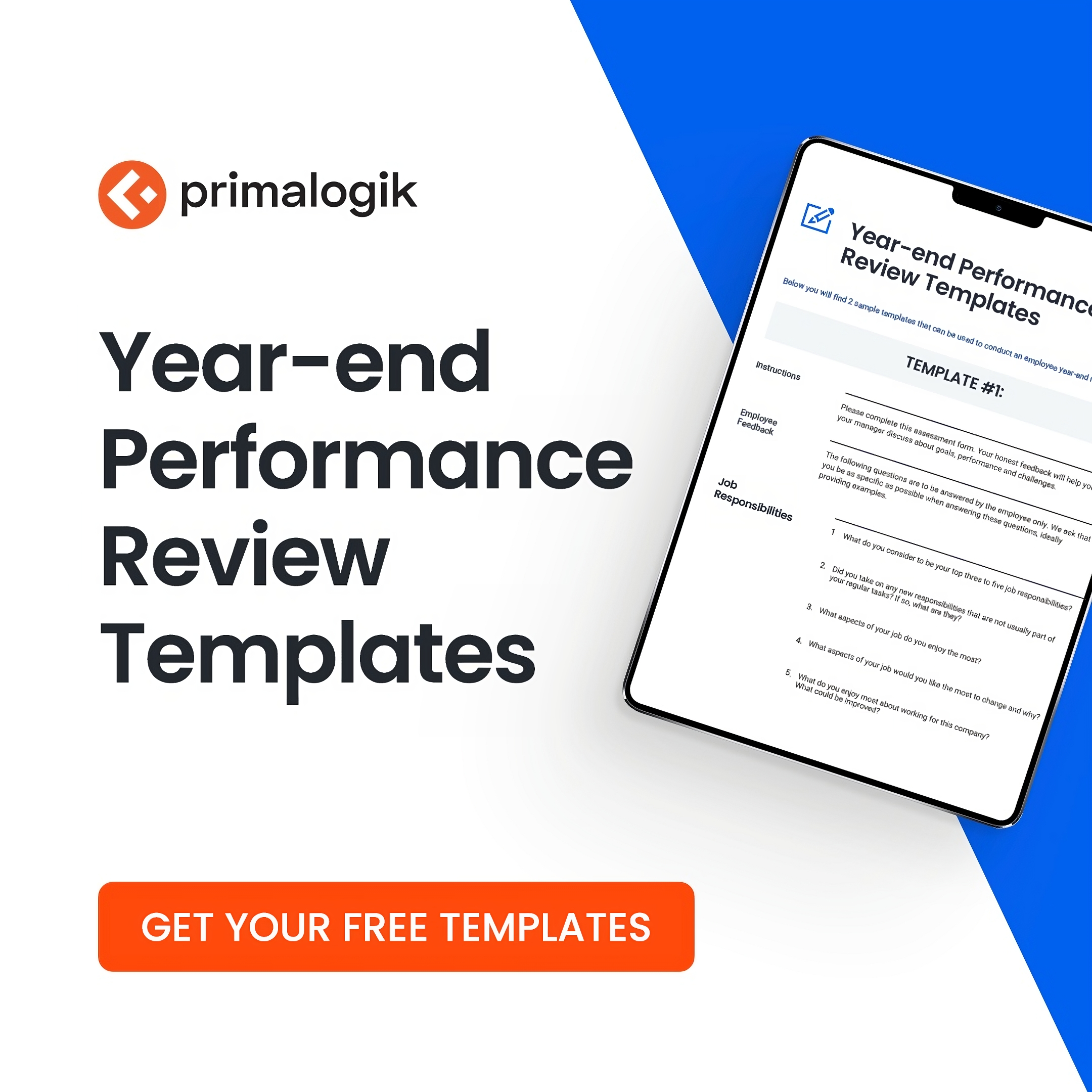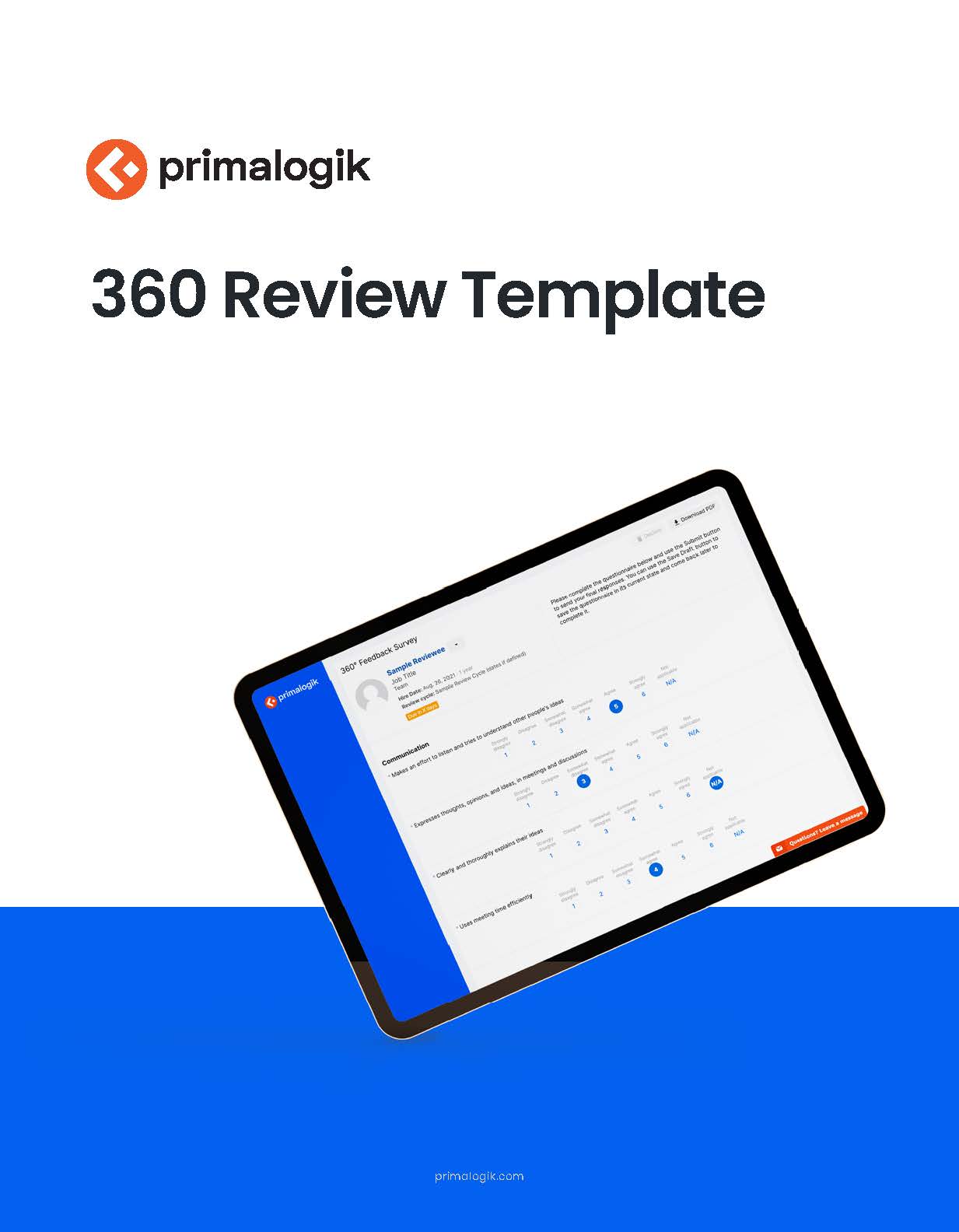Professional development goals help employees achieve the next level of success. Without setting good goals, advancement is unlikely to happen. Goals build motivation, and when accompanied by a clear plan for growth, they catalyze learning. Managers should strive to help all employees set appropriate personal development goals that will benefit their career.
In this article, we’ll discuss how to set, achieve, and reevaluate professional development goals. Let’s begin by reviewing what these goals entail.
Table of Contents
- What Are Professional Development Goals?
- Why Setting Professional Development Goals Matters
- How to Set Professional Development Goals
- 30 Examples of Professional Development Goals for Different Career Stages
- Best Practices for Setting Professional Development Goals
- How to Achieve Your Professional Development Goals
- How to Adjust Professional Development Goals Over Time
What Are Professional Development Goals?
Harvard Business School defines professional development goals as “short- and long-term benchmarks that encourage career growth, increase productivity, and support your personal and professional interests.” These goals involve learning and skill development, proficiency in new roles or tasks, and achievement of other career milestones. Some goals may centre on cultivating interpersonal skills, while others will relate to technical skills. These developmental goals support the achievement of performance goals.
Employees can set career goals for the short term (3–6 months) as well as the long-term (6 months to a year, or even more). These goals contribute to career success, skill enhancement, and job satisfaction.
Why Setting Professional Development Goals Matters
Setting strong career goals ensures employees excel in their career paths and increases loyalty to their organization. Let’s discuss the benefits in more depth now.
Upgrading Skill Sets
Ongoing education and development help people stay competitive, keeping up with industry changes. By reskilling and upskilling, employees will keep their skill sets highly relevant. In turn, this boosts productivity, improving team outcomes. Read up on industry trends and predictions to determine which skills will prove most crucial in the coming years, and help employees set goals accordingly.
Increasing Job Satisfaction
Setting and achieving goals can boost motivation and satisfaction in the workplace. Consider that 86% of employees would switch jobs if it would provide them with greater professional development. Strengthening personal development through thoughtful goal-setting will dramatically enhance engagement and retention.
Career Advancement
Achieving personal development goals leads to promotions, raises, and new opportunities. So, employees with strong goals will see a clear career path for themselves in your organization. In turn, this will further boost retention and commitment.
How to Set Professional Development Goals
Guide employees through each of the following steps to set exceptional personal development goals.
- Reflect on your overarching career goals. Ask yourself, “Where do I want to be in 3–5 years?” Spend time journaling about this, if writing helps you to process your thoughts. Then, discuss your overarching career goals with your manager during a one-on-one.
- Adopt a goal-setting framework. The SMART goal framework involves setting goals that are strategic, measurable, achievable, relevant, and time-bound.
- Set long-term goals that align with your overarching goals. Think in terms of goals that require 6 months to a year, or even slightly more, to complete.
- Set short-term goals that will act as stepping stones to your long-term goals. Craft clear key performance indicators (KPIs) for each short-term goal. These KPIs refer to concrete milestones that will show when you’ve achieved success.
- Reflect on goals periodically. Adjusting professional goals is a crucial part of the process in today’s fast-changing business environment. Once per quarter, devote your one-on-one with your manager to goal-evaluation and goal-setting. Take this time to recalibrate your goals to current organizational and personal development priorities.
Now, let’s look at potential development goals for employees at different levels of seniority.
30 Examples of Professional Development Goals for Different Career Stages

Goals for recent grads just starting their career will differ dramatically from the goals of seasoned professionals. Let’s look at some examples of good goals that will enhance professional growth at each stage.
Goals for Early-Career Professionals
Early-career professionals’ goals will help them become a vital part of a team. Here are some examples:
- Build strong time-management skills that improve my work-life balance.
- Cultivate proficiency in using XYZ software.
- Develop the ability to handle 90% of customer inquiries.
- Complete XYZ training program successfully.
- Cultivate strong collaboration skills that improve my effectiveness.
- Demonstrate the ability to lead a team project.
- Build solid relationships with 5–7 coworkers.
- Become skilled in leading team collaboration sessions.
- Grow strong problem-solving skills.
- Build and apply conflict-resolution abilities.
Achieving these goals will equip early-career professionals for a more advanced role.
Goals for Mid-Career Professionals
Mid-career professionals have taken on increased responsibilities, which demand an enhanced skill set. During this stage, they may be leading a team or spearheading projects. Here are some potential goals for people at this level:
- Demonstrate the ability to lead a next-level project, working with multiple stakeholders.
- Cultivate strong financial analysis abilities.
- Enhance motivation and engagement of direct reports.
- Strengthen technical proficiency in new software and tools.
- Develop strong cross-functional relationships with a broad range of colleagues.
- Complete XYZ leadership training initiative.
- Successfully coach and mentor direct reports.
- Teach a skill that I’ve mastered to the team.
- Enhance my ability to prioritize tasks and responsibilities.
- Develop the ability to confidently present ideas to senior leadership.
- Guide the team through effective problem-solving efforts.
Mastering these skills will prepare mid-level professionals for a senior-level role.
Goals for Senior-Level Professionals
Senior leaders’ goals will enhance their ability to strategically lead a company:
- Cultivate the ability to guide the organization through change.
- Effectively mentor three mid-level employees.
- Take accountability for any mistakes I make.
- Solicit, and act upon, feedback from employees on a weekly basis.
- Cultivate an enhanced understanding of shifting market conditions.
- Develop the ability to take smart strategic risks that enhance the company’s position.
- Grow strong relationships with all high-level stakeholders affected by company initiatives.
- Develop exceptional public speaking and presentation skills.
- Cultivate strong negotiation skills.
- Complete XYZ training initiative to further enhance leadership skills.
As you can see, the goals for each career phase range widely, but there is also some overlap. At each stage, goals could include completing advanced education, building particular types of interpersonal skills, or enhancing technical abilities.
Best Practices for Setting Professional Development Goals

Share these best practices with employees to enhance their goal-setting efforts.
Align Goals with Career Objectives
Ensure every professional goal supports your long-term career vision. Think about your personal brand—what values and passions shape your career aspirations?
Look at how your current skill set aligns with your long-term career development goals. What gaps exist, or what hurdles will you need to surmount? List specific types of skills, knowledge, or certifications you’ll need to move closer to your goals.
Break Goals Into Actionable Steps
Divide large goals into smaller, manageable objectives. Create clear SMART goals consisting of concrete tasks that will serve as stepping-stones toward your goals. Specify the time-frame for achieving each one. Here are some examples of action steps:
- Signing up for a certificate program.
- Reading a book on a particular topic.
- Volunteering for a project that will stretch your abilities.
- Undergoing cross-functional training.
- Making a presentation in a group meeting.
- Shadowing a higher-level colleague.
Action steps like these will cultivate and help demonstrate the skills you’re working to grow. Some may consist of trainings, while others will comprise hands-on learning and practice.
Seek Feedback and Mentoring
Strong mentoring tends to produce higher-quality goals, research has found. These goals are specific and difficult (but achievable), and they garner a sense of commitment. So, cultivate good relationships with a mentor and work with them to set and refine goals. This mentor could be your immediate manager, but they could also be another leader in your organization (or outside of it).
Engage in Continuous Learning
Embrace the mindset of being a lifelong learner to ensure you stay highly competitive in today’s fast-changing job market. Look for both formal and informal opportunities to learn on an ongoing basis, from seminars to peer-mentoring. This will also give you more job satisfaction, making your career more enriching and engaging!
How to Achieve Your Professional Development Goals
Share these key strategies with employees to help them make steady progress toward their career development goals.
- Create a plan: Develop a roadmap with deadlines for each goal. Use a spreadsheet document, a whiteboard, or a piece of paper to write out goals, steps, and target dates.
- Stay accountable: Regularly check your progress on your goals. Hold yourself accountable to meeting them, just as you would for your other work responsibilities.
- Embrace failure: Accept that setbacks are part of professional growth, and strive to learn from them. Identify lessons learned from any failure, pinpointing what you can do differently. Then, try again!
- Leverage resources: Use online courses, workshops, mentors, and industry events to move closer to your goals. The relationships you develop with others, and the insights you gain from them, will prove just as valuable as seminars and conference sessions.
- Use technology: Leverage goal-tracking tools to track your progress. On a daily and weekly basis, they let you clearly visualize the steps you’ve taken toward your goals. They’ll also highlight smaller achievements you’ve made and any KPIs (key performance indicators) you’ve accomplished. These tools also keep your master plan easily accessible on a centralized platform.
- Track and measure progress: Consistently evaluate your development and adjust goals as necessary. Consider the percentage of each goal you’ve achieved, assessing whether you’re on target to meet deadlines.
- Celebrate small wins: Recognize progress along the way to stay motivated.
Finally, let’s review how to reassess your goals regularly to ensure they stay relevant.
How to Adjust Professional Development Goals Over Time
Revising goals is necessary from time to time. On a regular basis, employees should ask themselves if their goals need to shift based on changing circumstances. Here are a few factors that can affect goals:
- Shifting organizational or team priorities
- Evolving personal interests or career ambitions
- Role changes, like lateral moves or promotions
- Changing industry demands or trends
Review professional goals at least once per quarter to ensure they remain relevant. If any major organizational or environmental changes happen, urge employees to reflect on their goals as well. Managers can work one-on-one with them to reevaluate and revise their goals.
Additionally, goals should evolve as people gain new skills or transition into new roles. During such times, employees should pause to reflect on where they aim to go next in their career. Encourage them to think about what milestones they aim to achieve in their current role, too. Then, they can tailor their goals for professional growth to support those objectives.
Setting and achieving strong professional development goals will make your teams more engaged and motivated. As morale increases, so will job satisfaction and retention. Remember that goal setting and evaluation is a continuous process, and urge managers to regularly guide employees in reviewing goals. Through their efforts, they’ll help employees achieve ambitious career goals that increase organizational success.
Learn how Primalogik can enhance goal tracking and achievement—demo our performance management software.





